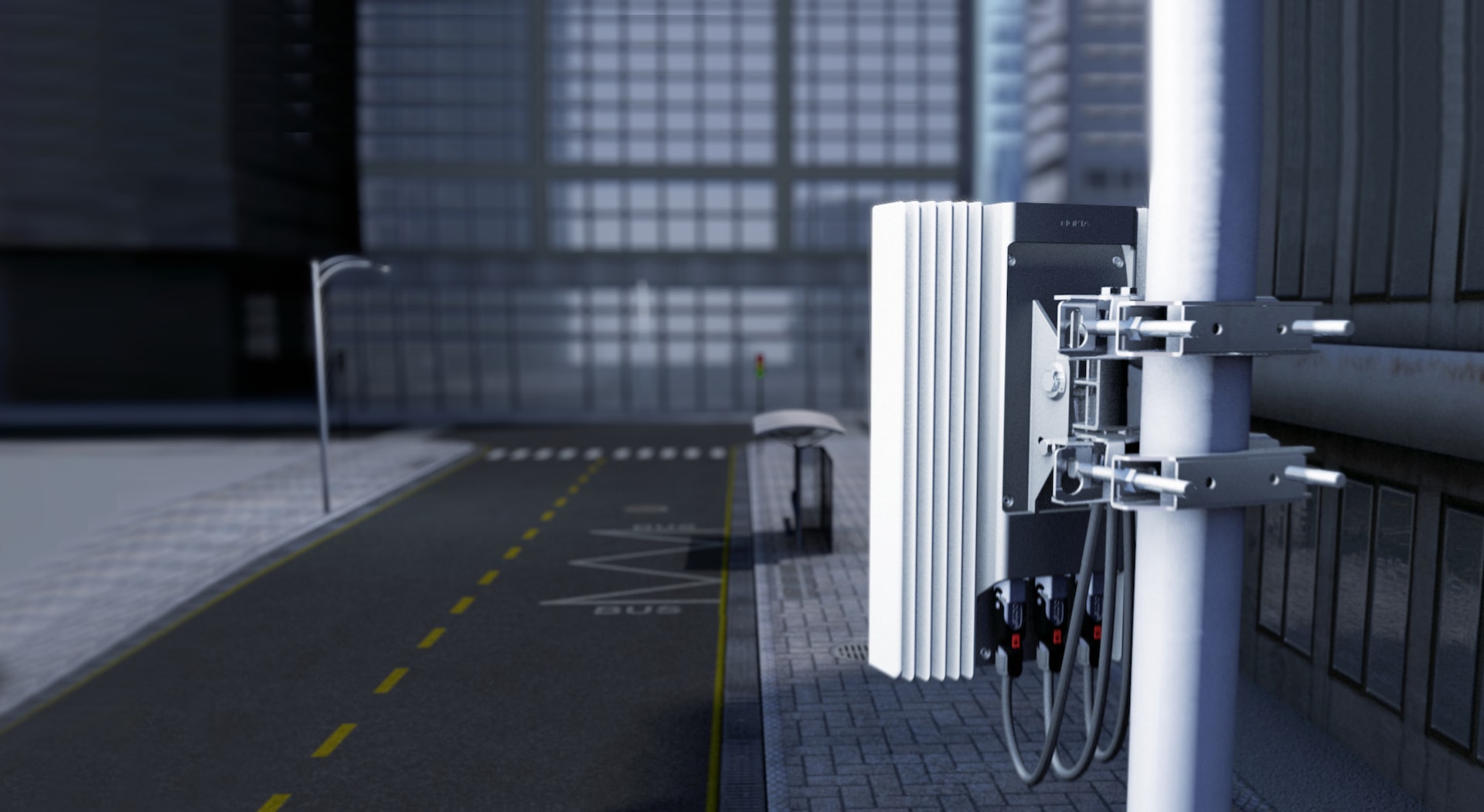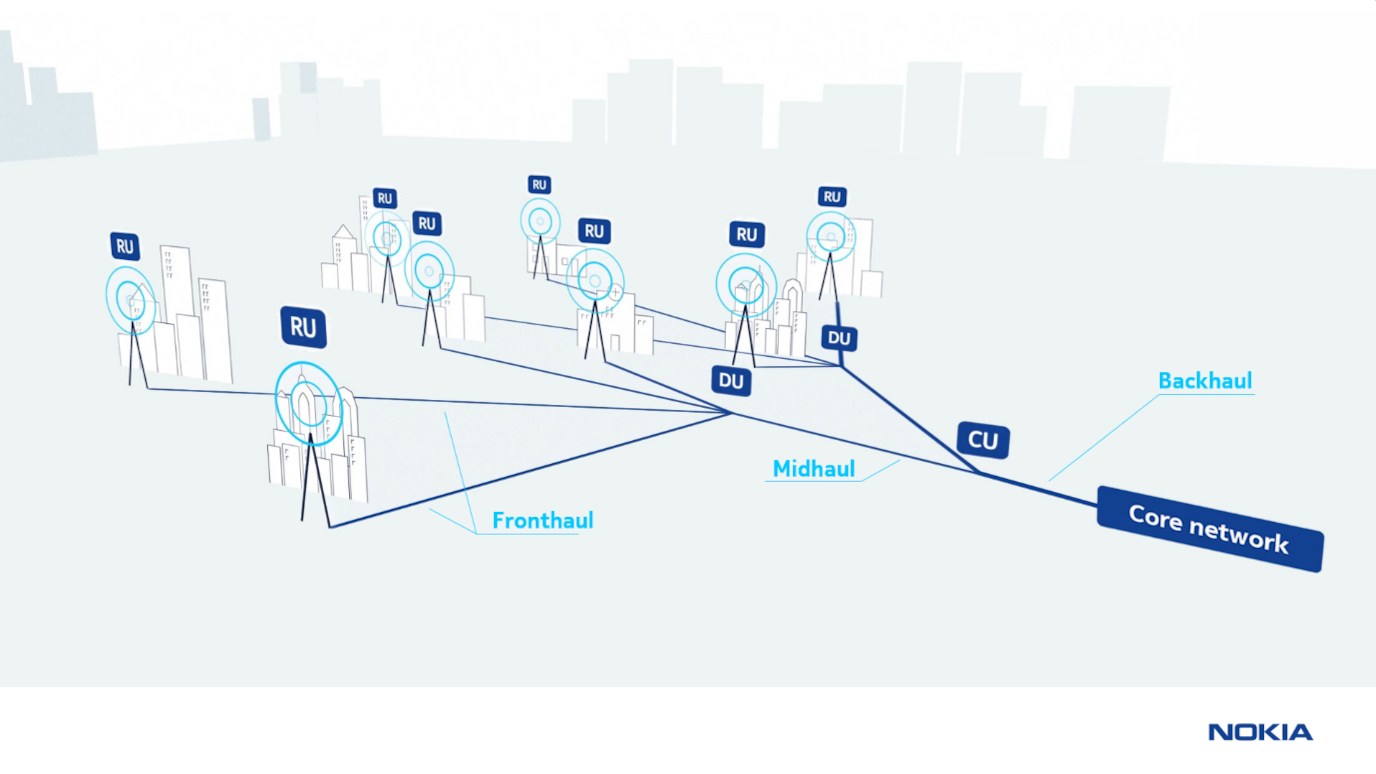Open RAN explained

The introduction of Open RAN is the final piece of the unbundling puzzle that enables mobile network operators to use equipment from multiple vendors and still ensure interoperability.
How networks work
To understand Open RAN, it is useful to first have a high-level understanding of how networks work and how they have evolved through the various generations.
The mobile, or cellular/wireless network comprises two domains: the Radio Access Network (RAN) and the Core Network (Core).
The RAN is the final link between the network and the phone. It is the visible piece and includes the antennae we see on towers, on top of buildings, or in stadia, plus the base stations. When we make a call or connect to a remote server e.g., to watch a YouTube video, the antenna transmits and receives signals to and from our phones or other hand-held devices. The signal is then digitalized in the RAN base station and connected to the network.
The Core has many functions. It provides access controls ensuring users are authenticated for the services they are using, it routes telephone calls over the public switched telephone network, it enables operators to charge for calls and data use, and it connects users to the rest of the world via the Internet. It also controls the network by making handovers happen as a user moves from coverage provided by one RAN tower to the next.
Evolution of the networks
Cellular networks have evolved rapidly since they were first digitized to create 2G and each new generation has seen a step-change in technical complexity.
Whilst it was always possible for operators to have one vendor for their core network and a separate vendor for the RAN, interoperability between RAN equipment from different vendors was deprioritized at the expense of adding overall functional capability. As a result, with current solutions, it is difficult to mix vendors for the radio and baseband unit, and in most cases, they come from the same supplier.
Multi-vendor implementation and standardization between specified interfaces have been commonplace for example with radio and core network providers in the same network for decades. Open RAN looks to change this and enable operators to mix and match components and goes one step further by opening the interfaces inside the base station.
1G to 5G
1G. Voice services over analogue cellular technology
2G / GSM. Improved voice and text messaging over digital cellular technology
3G / UMTS. Integrated voice and affordable mobile Internet up to 2Mbps
4G / LTE. High-capacity mobile multimedia up to 100Mbps.
5G / New Radio (NR). 5th generation network for fixed and broadband services as well as Ultra-reliable machine communications, 1st generation for machines. Speeds of 10 Gbps are frequently commonplace.
Opening the RAN
As the equipment-makers enhanced the capabilities, the industry consolidated around those with the strongest offer and often proprietary functionality. But operators today want a more diverse ecosystem of vendors and are redefining their requirements for the network architecture, especially in the RAN.
In an Open RAN environment, the RAN is disaggregated into three main building blocks:
- the Radio Unit (RU)
- the Distributed Unit (DU)
- the Centralised Unit (CU)
The RU is where the radio frequency signals are transmitted, received, amplified, and digitized. The RU is located near or integrated into, the antenna. The DU and CU are the computation parts of the base station, sending the digitalized radio signal into the network. The DU is physically located at or near the RU whereas the CU can be located nearer the Core.
The key concept of Open RAN is “opening” the protocols and interfaces between these various building blocks (radios, hardware, and software) in the RAN. The O-RAN ALLIANCE has defined different interfaces within the RAN including those for:
- Fronthaul between the Radio Unit and the Distributed Unit
- Midhaul between the Distributed Unit and the Centralised Unit
Another feature of Open RAN is the RAN Intelligent Controller (RIC) which adds programmability to the RAN.
Advantages of Open RAN
An open environment expands the ecosystem, and with more vendors providing the building blocks, there is more innovation and more options for the Operators. They can also add new services. For example, Artificial Intelligence can be introduced via the RIC to optimize the network in the vicinity of a football stadium on a match day.
CloudRAN (vRAN - Virtualized Radio Access Network)
Whilst Virtualization of the RAN is not the same as Open RAN, it can be deployed in conjunction and makes the RAN much more flexible. What was done in hardware can now be done in software which reduces entry barriers into the market. The DU and CU are effectively computers running software. Instead of using custom hardware, they can now be virtualized and run on any Cloud Server, as long as it is near the base station to reduce latency. Nokia calls this Cloud RAN and its software is the same as which runs on bespoke hardware to ensure feature parity and facilitate maintenance of the releases. Nokia offers a full portfolio of solutions to mobile operators including a cloud computing hardware platform (Nokia AirFrame Open Edge) and software. An operator can also use alternative cloud computing hardware from a different vendor and run Nokia’s Cloud RAN software on it.
Nokia and Open RAN
Nokia is a supporter of Open RAN and was the first major telco equipment vendor to join the O-RAN ALLIANCE. Global mobile operators are pushing for open, intelligent, virtualized, and fully interoperable RAN solutions. Governments are looking to O-RAN as a way to introduce new suppliers to their market and drive local 5G innovation. More market diversity is likely to accelerate this. New open and disaggregated architectures, software, and hardware such as Open RAN, gives operators the flexibility to extend 5G to more users in a cost-effective, secure, and energy-efficient way. Nokia sees this flexibility as a way to stimulate greater innovation across industries in areas such as telemedicine and smart factories.
Additional resources
Nokia RAN products include:
- AirFrame open edge server
- AirFrame Fronthaul Gateway
- AirScale active antennas
- AirScale Base Station
- AirScale Indoor Radio System
Key terms
- Radio Access Network (RAN). The final link between the network and the phone. Contains Radio Unit (RU), Distributed Unit (DU) and Centralised Unit (CU).
- Core Network (Core). Controls the network.
- Open RAN is about disaggregated RAN functionality built using open interface specifications between elements. It can be implemented in vendor-neutral hardware and software-defined technology based on open interfaces and community-developed standards. Open interfaces include (open) Fronthaul and (open) Midhaul connecting the different parts of the RAN and (open) Backhaul between the RAN and the Core.
- O-RAN. O-RAN refers to the O-RAN ALLIANCE or its designated specifications. O-RAN Alliance is a specification group defining next-generation RAN infrastructures, empowered by principles of intelligence and openness. It is a worldwide community of around 200 mobile operators, vendors, and research & academic institutions operating in the Radio Access Network (RAN) industry. Its mission is to re-shape the industry towards more intelligent, virtualized network elements, white-box hardware, and standardized and open interfaces. The term O-RAN refers to interfaces and architecture elements as specified by the O-RAN alliance.
- Open RAN Policy Coalition represents a group of companies formed to promote policies that will advance the adoption of open and interoperable solutions in the Radio Access Network (RAN).
- RAN Intelligence Controller (RIC) is a new network element that enables new services to be introduced into the Radio Network, e.g. software that optimizes the performance of the network. The RIC works by exposing an API (application programming interface) that lets software talk to each other.
- Cloud RAN or vRAN means implementation of the RAN in a more open and flexible architecture that virtualizes network functions in software platforms based on general-purpose processors. vRAN utilizing open interfaces is one component of Open RAN.
